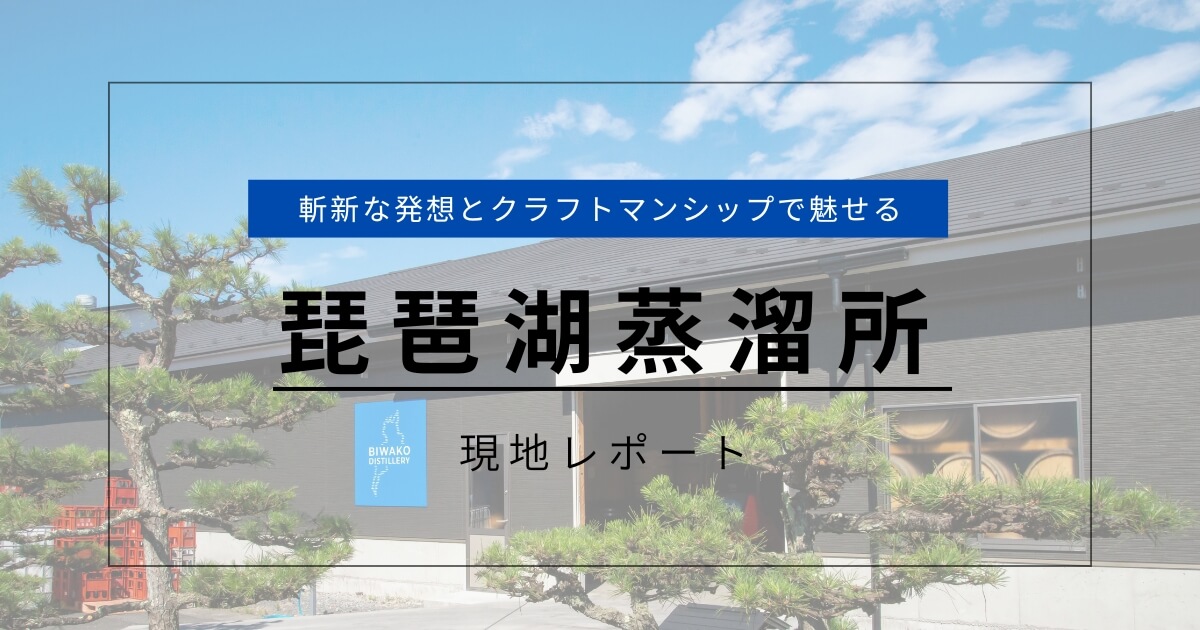
【現地レポート】斬新な発想とクラフトマンシップで魅せる琵琶湖蒸溜所
- 造り手
- 蒸溜所(日本)

The Southernmost Scotch whisky distillery, Bladnoch, has over two centuries of history in whisky-making. However, due to switching owners numerous times and repeated mothballing, Bladnoch never truly developed a consistent style and production since its establishment in 1817.
Since David Prior, an Australian entrepreneur, bought and refurbished the distillery in 2015, Bladnoch has been rapidly growing, with Nick Savage playing a pivotal role in shaping the distillery’s legacy.
In part two, Nick explains why Bladnoch whisky is considered one of the best Lowland-style whiskies. Additionally, Nick discloses the story behind the creation of the famous “Waterfall” series that has gained worldwide recognition.
【Exclusive Interview】Part1: Nick Savage – Master Distiller of the Bladnoch Distillery
【Distillery Visit】Bladnoch Distillery: Queen of the Lowland
Dear WHISKY:
Since you joined Bladnoch in 2019, how did you develop the range of whiskies?
Nick:
Back then, we had the 10-year-old, the 15-year-old, Samsara, and Talia. When I inspected the stocks that we had for making Adela 15 years old Oloroso cask, because of the way Adela was made up, we were not going to be able to grow it as a consistent range.
So I looked at the warehouse stocks and the whisky ranges and realised we needed to build a portfolio that we could make continually for a long time.

Building portfolio of the Bladnoch whisky
Dear WHISKY:
Why is continuity in releases important?
Nick:
If you see 11-year-old Bladnoch on the shelf once, ideally, there should always be an 11-year-old available. Otherwise, we’ll have to tell the customer the same thing every year, although it has different numbers on it. That’s why we need to make a sustainable portfolio where a customer can be navigated and pick their go-to. That was the idea, and then we wanted to develop other areas to explore, such as single casks and more.
Dear WHISKY:
What does your unique release look like?
Nick:
Single casks, such as the Palo Cortado cask or Amontillado cask, are the exploration of casks, something different. Then we’ve got the exclusive releases “The Waterfall” and “The Wave”. Each release is only a thousand bottles, rare and exclusive. Then we’ve got the storytelling, such as the Dragon and other things. Since the portfolios are there, people can have their go-tos. On top of that, customers can choose what to enjoy from Bladnoch.
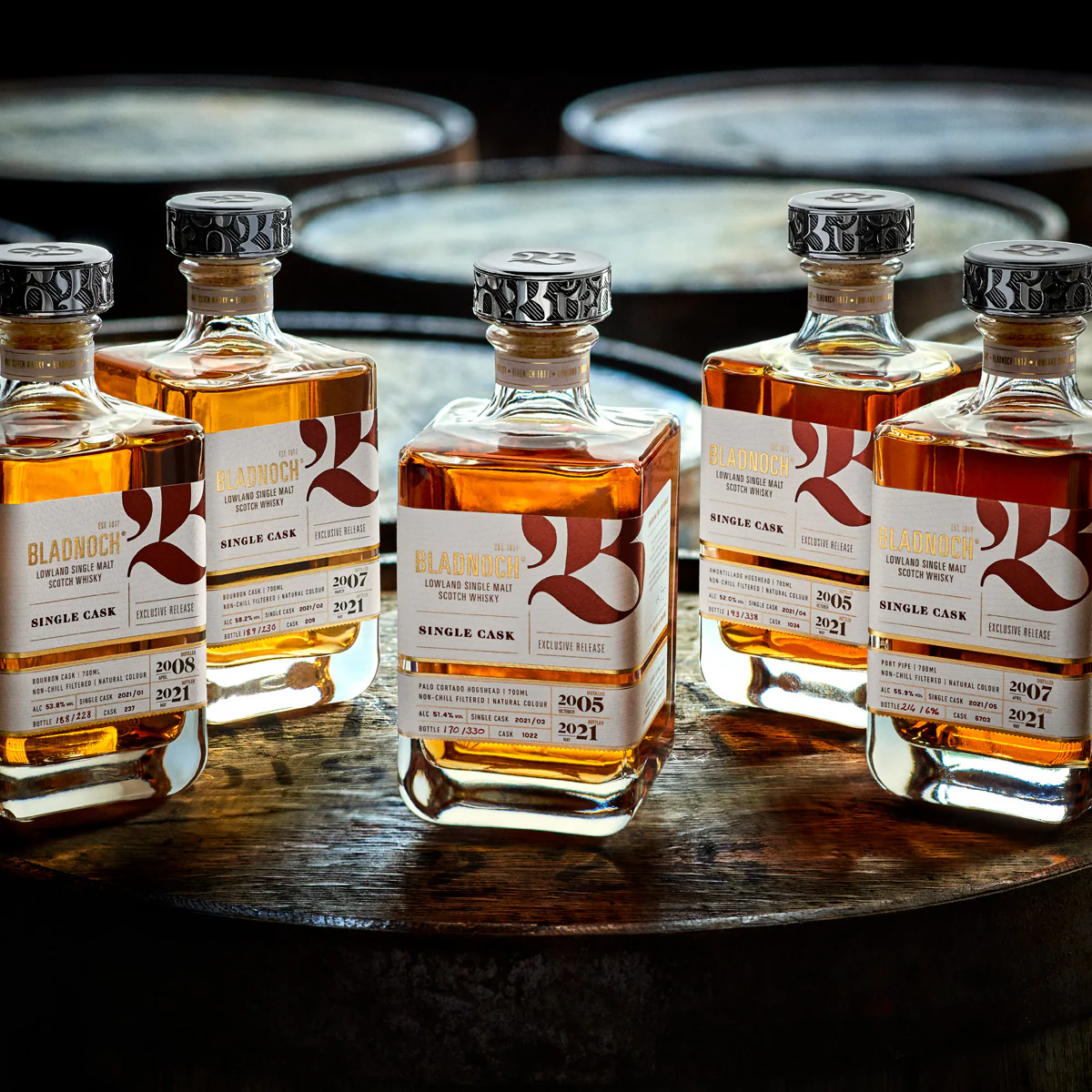
Bladnoch Single cask series
Dear WHISKY:
Why does Bladnoch have such a diverse range?
Nick:
It all gears around taste, exploration and storytelling to break some of these paradigms of age or the big nose. Our releases are very much about trying to explore flavour. What’s the point in all “What Nick says” or 50 years old or Sherry casks if you don’t like the taste? I won’t get people to spend a hundred pounds on a bottle they don’t like.
I’d rather have my customers spend 50 pounds on a different bottle that they are actually going to enjoy.
Dear WHISKY:
How is Bladnoch whisky sold on the international market?
Nick:
I found it inefficient that each market worldwide was receiving everything. We only need specific ammunition to service different locations such as Japan, Germany, New York, and France.
Dear WHISKY:
How do you choose whiskies for each country?
Nick:
Let’s take Germany for example. In that market, peat, 14-years-old, and Liora will work great with their core consumers, considering their mindset about whisky. Japanese, on the other hand, Vinaya, 11-years-old, maybe 19-years-old, would be popular because they work very well in highball. As such, we understand what each market will value and the ideal price point.
Dear WHISKY:
How do you figure out these trends?
Nick:
We’ve got a broad portfolio, which I refer to as ammunition. Wherever you want to go into a market, you take the ammunition to win in that specific market. If we only have one product, it will be tough to go around. Therefore, I give the brand enough ammunition to go win. That’s the idea.
Dear WHISKY:
Are you in charge of these plannings?
Nick:
Commercial teams are in charge of that; I throw my hat in but will only interfere a little. This is because I could misdirect it and be biased as a creator of those whiskies.
So I get asked lots of opinions but always make sure to tell them that I am just supporting, not dictating.
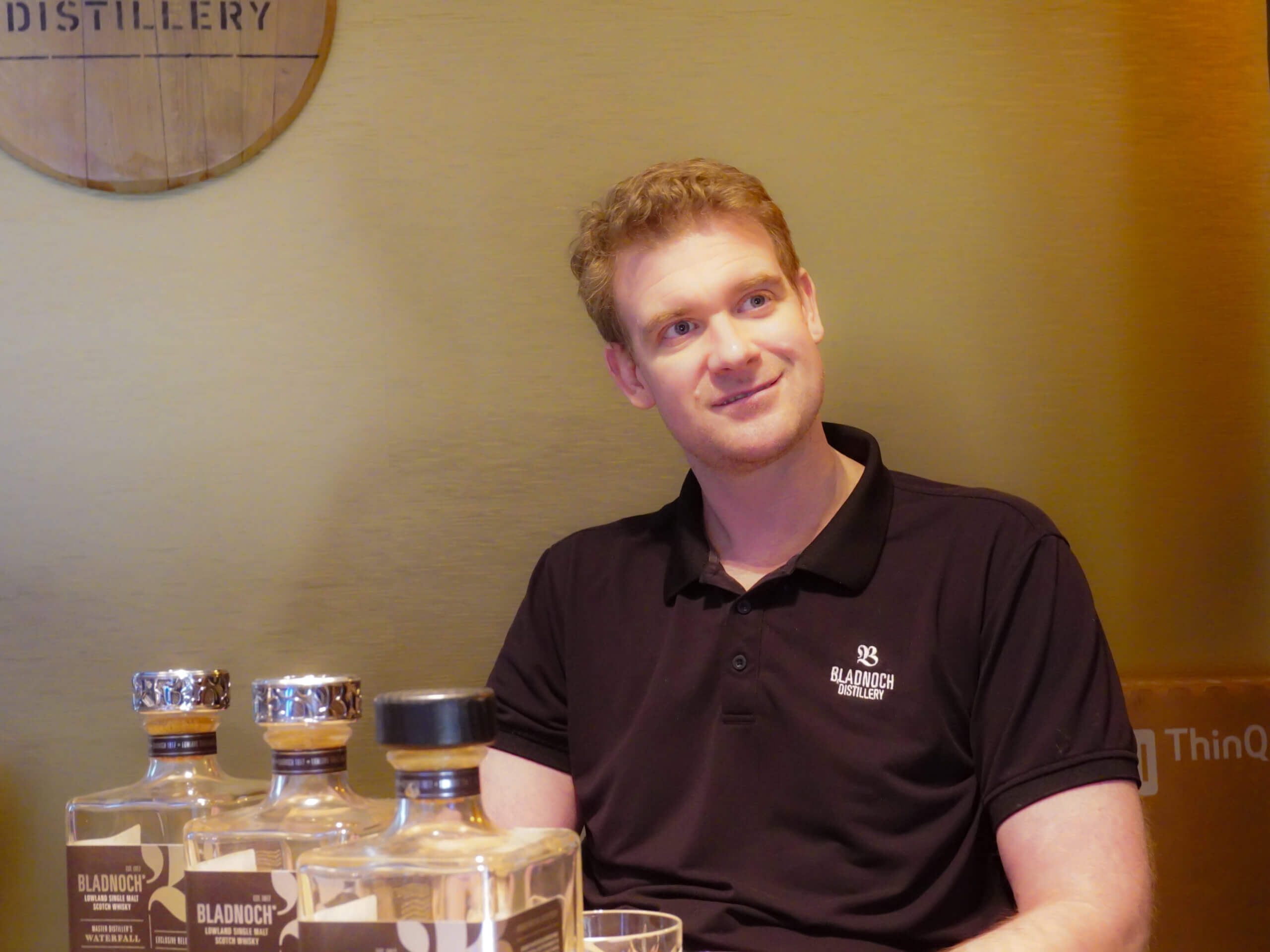
Working as a team to expand Bladnoch internationally
Dear WHISKY:
How do you support them?
Nick:
When they think certain products will work great in one market, I ask, “What do you need? How much do you need? Do you need someone to come support?” If it doesn’t work, then we’ll have a different chat.
Dear WHISKY:
What kind of taste did you aim for when you joined Bladnoch?
Nick:
Regarding Bladnoch’s taste, Ian McMillan, prior Master Distiller of Bladnoch, had done a great job reinvigorating and imagining it. I made it sure to maintain consistency. Anyways, that is pretty much our house style. It’s relatively light in terms of intensity.
It’s also a great example of what I believe a lowland style is.
Dear WHISKY:
What do you seek to do with Bladnoch’s house style?
Nick:
Because Lowland style is not well defined often, I want to showcase and tell the story of it. We’ve already got a house style that’s consistent and amazing. We’ll try to bring it alive so that people understand what we’re trying to do. I never want to change it per se because that’s not for me.
Dear WHISKY:
Which whisky represents the Bladnoch style the most?
Nick:
Vinaya got that house-style floral, grassy note and apple-like refreshing sweetness. Vinaya on a Hignball; it’s dangerously refreshing.
Dear WHISKY:
Many people think whisky has strict rules, such as neat/straight is the only way to enjoy whisky. What do you think of this idea?
Nick:
I never get that. It’s your whisky; you can add whatever you want and drink it however you like.
But whatever you add, it should champion the whisky.
So, if it’s floral and fruity, have it as a highball because that would enhance those flavours. Or if you have a peated whisky, make some smoky whisky sour since it amplifies the taste.
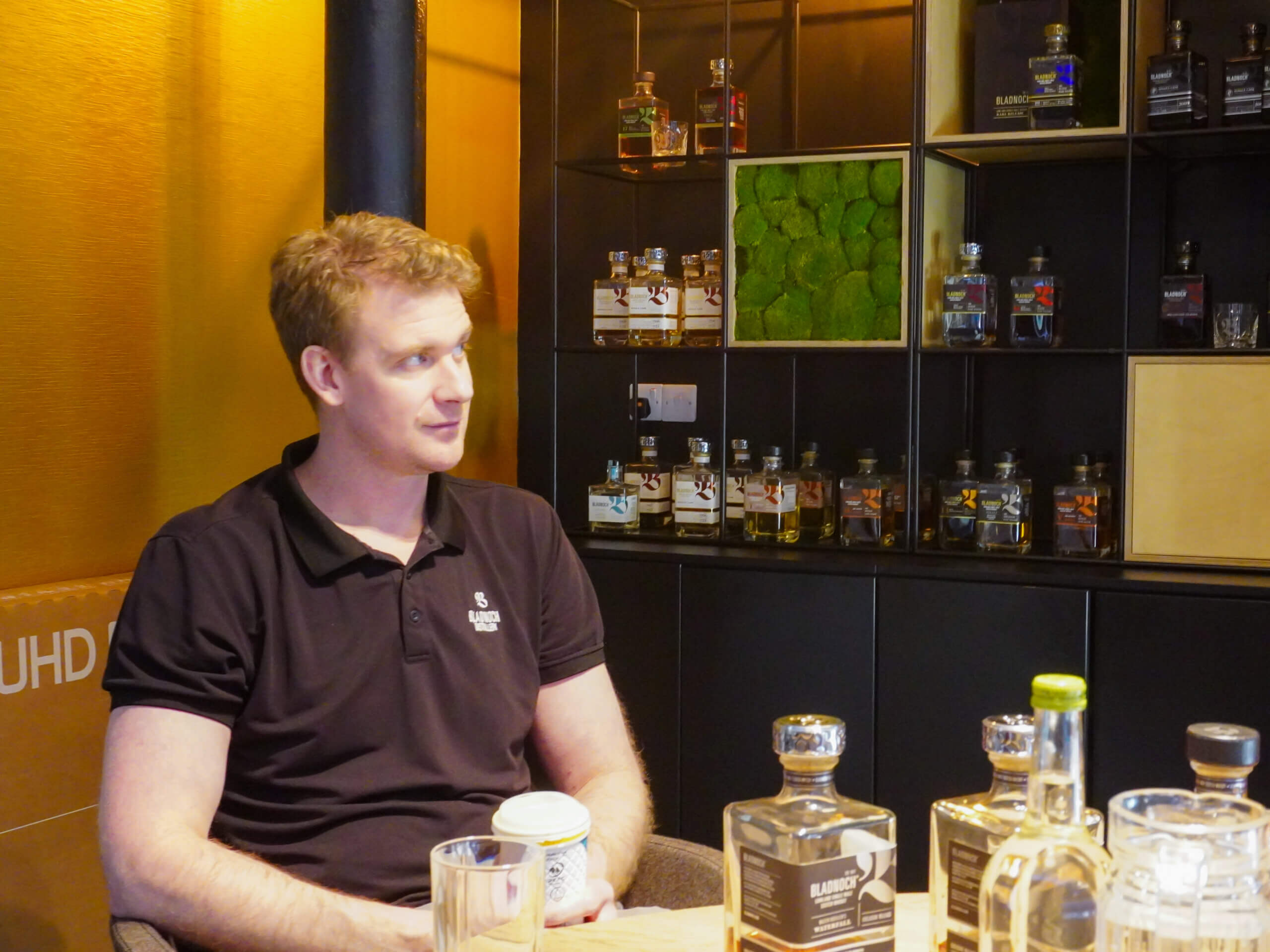
“Enjoy your whiskies however you like! unless…”
Dear WHISKY:
There are almost no rules to drinking whisky, then?
Nick:
I can’t remember who it was, but I’ve heard someone say, “You can add what you want, but just no coke.” Because if you add coke, you’re just trying to cover it up. If you have to cover it up, let’s get you a different whisky since you clearly got the wrong whisky.
Dear WHISKY:
Other than cask selections, do you perform some experiments?
Nick:
Mostly, consistency would be our focus; 95% of the year, we make unpeated. However, for 5% of the year, we’ll do a peat campaign using peat malts for 4-6 weeks.
These are the innovation stocks to lay down.
As of now, I am even talking to the maltster to innovate our peat, and hopefully, we will get some different style peat coming off the plant this year.
Dear WHISKY:
Why do you do these campaigns?
Nick:
We need a bit more of those innovative stocks. We’ve got quite a broad array of casks, and 95% of them are first fills. I want to build on that with more distilling innovation.
Dear WHISKY:
What about having innovative stocks are essential?
Nick:
As I said earlier, my job is like a custodian. I could fill them all into bourbon or refill, and they’d be all the same cask. Then, when you hand it on to somebody, they will only have a little to explore.
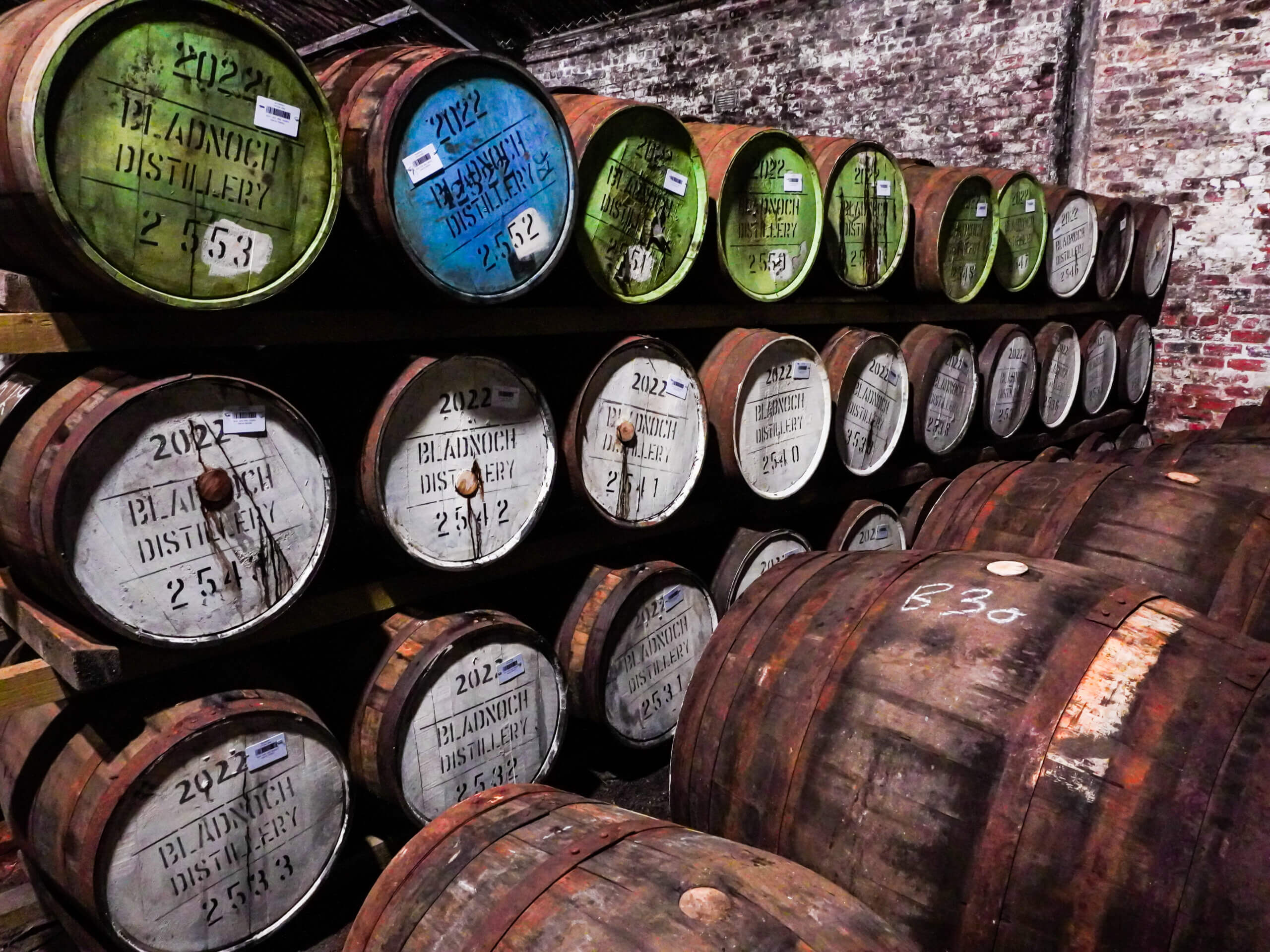
Nick is responsible as a custodian for keeping the stock abundant
Dear WHISKY:
What does the warehouse stock look like now?
Nick:
About 40% of our stocks are bourbon; the other 60% consists of red wine, Sherry, port, and everything else. I’ve got an innovation pool there, and those are real treasure chests, which I am still trying to figure out what I’ll do with them.
Dear WHISKY:
What kinds of unusual casks do you have?
Nick:
I bought 40 Mizunara casks, although they cost 4,000 pounds. The finance team in Australia went, “What are these casks? What are you going to use them for?” I said, “I don’t know”. I don’t know when they will be ready, so it might not be me who uses them.
It might be the person 20 years from now, and that’s how you hand the stocks over.
That’s important to do.
Dear WHISKY:
How did you come up with the “Waterfall Series”?
Nick:
These ideas come from me and Becky Flannighan, Maturing Stocks specialist. I’ll generally develop the concept, and then Becky will tell me that I can’t do it. They always start as a piece of paper, and I scribble something, and then I’ll think, “Okay, what if we do this? What if we do that? What about this type of story?” Then, I’ll put it on the whiteboard, and we’ll make it into a flow chart or diagram.
Dear WHISKY:
How long did it take for you to make this series work?
Nick:
The first time you draw it, it’s not right. It would make no sense, and you redraw, rework, and rethink about it. Our next series, “The Wave”, took four or five months of just whiteboard and pieces of paper. During this time of planning “The Wave”, I didn’t nose any whisky for about three, four months. But then when I do nose a whisky, it takes shape in like two weeks.
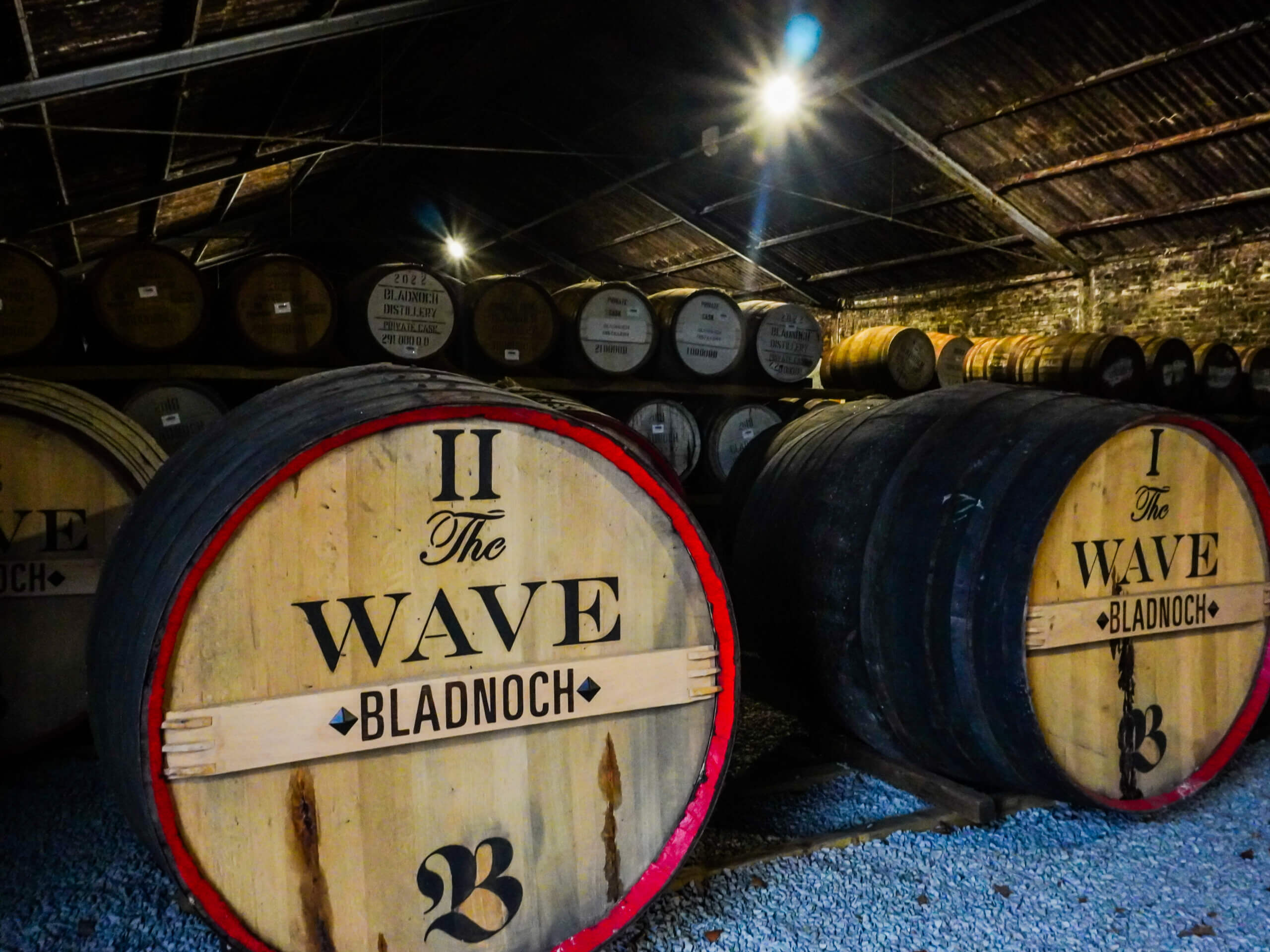
Large casks for the upcoming series “The Wave”
Dear WHISKY:
What is the idea behind these series?
Nick:
Solera systems in Spain use this cascade effect method. My idea was to have something that people could collect which would bring them back to the distillery. I wanted products that could allow us to talk about the whisky. “How do you make decisions? How do you do it?” and answering all that to be transparent with everything.
Dear WHISKY:
What do you expect from this whisky?
Nick:
They are the storytelling whiskies, so it’s okay for people to dislike this whisky. I had fun in the process of making this new idea work out.
I think that is the best bit, and I am sure people have fun and get excited when they receive this whisky as well.
Dear WHISKY:
How exactly did this idea start off?
Nick:
When I nosed everything that we had at the time, I found that we had a pool of Bourbons and we had a pool of Oloroso Sherry, which were about 14 years old then. They seemed very difficult to put into a product since they both, especially Sherry, had already gone through several casks. When you get these pools of stock, I think it was around 6,000 bottles worth of stock; you have to think of how to use them. It was a fantastic stock, but didn’t have a natural home to go to, meaning it didn’t have a product I could push them into.
Dear WHISKY:
What was the inspiration behind it?
Nick:
I was figuring out what to use them for, then thought we could put it all together to release a thousand bottles. I told Becky about it, and she went, “Yeah, but what are you going to do with the extra 5,000?” I went, “Hold my beer. What if we put it into a cask, leave it a year, take a thousand bottles out, and put the rest in the next cask? Then, you kick it around different casks.”
Becky asked “Which casks are you going to use?” to which I answered, “I don’t know; that’s the fun bit.”
Dear WHISKY:
What was your team’s reaction to the idea?
Nick:
Although it was 100 pounds a bottle, I was confident that its collectability and limited release would make them popular. However, I remember the looks on people’s faces when I told them, they thought I’ve got two heads. So, I drew them out on a piece of paper to explain how simple it would work.
Dear WHISKY:
What were your team’s main concerns?
Nick:
Since many of their concerns were how we decide the casks, we went live with it. We nose the whisky annually and see how it has developed. From there, we will pick the casks to decide which direction we want to take.
Dear WHISKY:
How exactly does that work?
Nick:
Starting with Bourbon and Sherry, 2nd release was finished in Oloroso Sherry Puncheon, 3rd in Port Pipes, 4th in Tokaji Wine Cask, and then release number five coming up on May 18th.
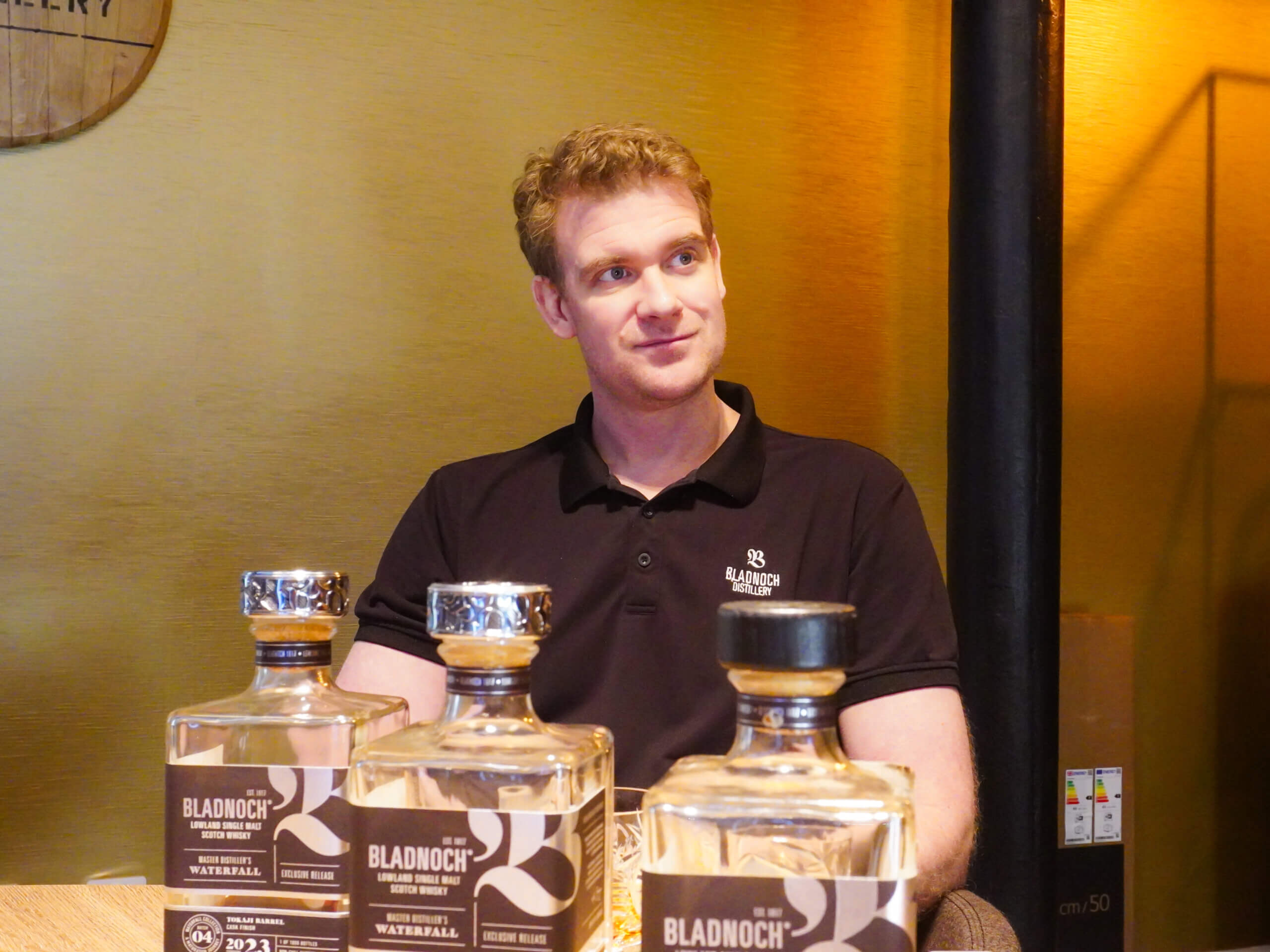
Nick and his “Waterfall series”
Dear WHISKY:
Why do you think Waterfall became so popular?
Nick:
The “Waterfall series” was just for me to begin with; they’re good fun to do, and I love them. So when it got so popular, I initially didn’t understand the fuss. It was all about having fun with a simple idea on the whiteboard. However, I think the simplicity and transparency of it might be what people appreciate, and people seem to enjoy learning.
Dear WHISKY:
How do you want people to enjoy this whisky?
Nick:
On the side, you can see three taste notes that I think are most prominent in that whisky. We do a flavour profile first and provide more details underneath. Since this is an expensive whisky, I think it’s only fair to be clear with people and tell them that these are sort of what you’re getting.
By telling what we’re trying and how we do it openly and transparently, people can also see where the flavours came from.
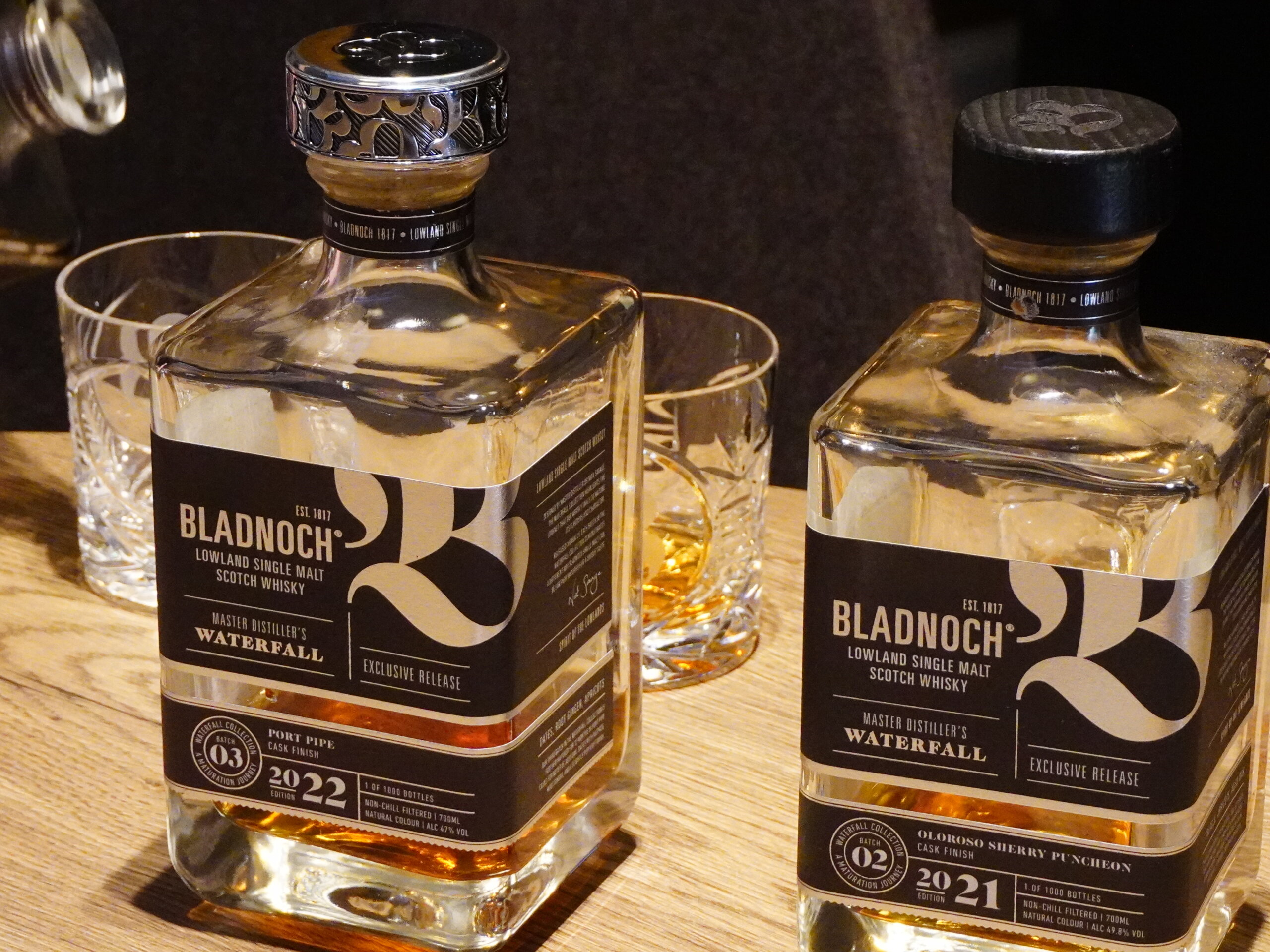
Transparent storytelling on the side of the bottles
Dear WHISKY:
Starting with such a complex problem to face, what was the motivation to carry through this project?
Nick:
I always thought, “If it all fails, at least I had fun doing it.” Through the process of this series, there are things we took forward, such as learning to make some of the core products. We’ll not sing and dance about how we do it, but we take the learnings to make more products more consistent. In addition, we developed a story on that stock pool that we found too difficult to use. So you never know where the opportunity is going to be at. The stock could be a problem or it could be an opportunity. And I think that’s an important thing.
Dear WHISKY:
What is the foreseeable future for the distillery?
Nick:
You are going to see a lot from Bladnoch. There will be an end to the “Waterfall series”, and what comes next is really cool: Bigger, better, more interesting. Important launches are coming towards the end of the year, probably in November, with some new global core ranges. Then, we will build upon those ranges over the next year or two.
It’s almost like we built a lot of momentum in the wheel, and all of a sudden, over the next year, you’re going to see this wheel go.
You will see it rumble and start to take off; we will give the guys the ammunition to do it.
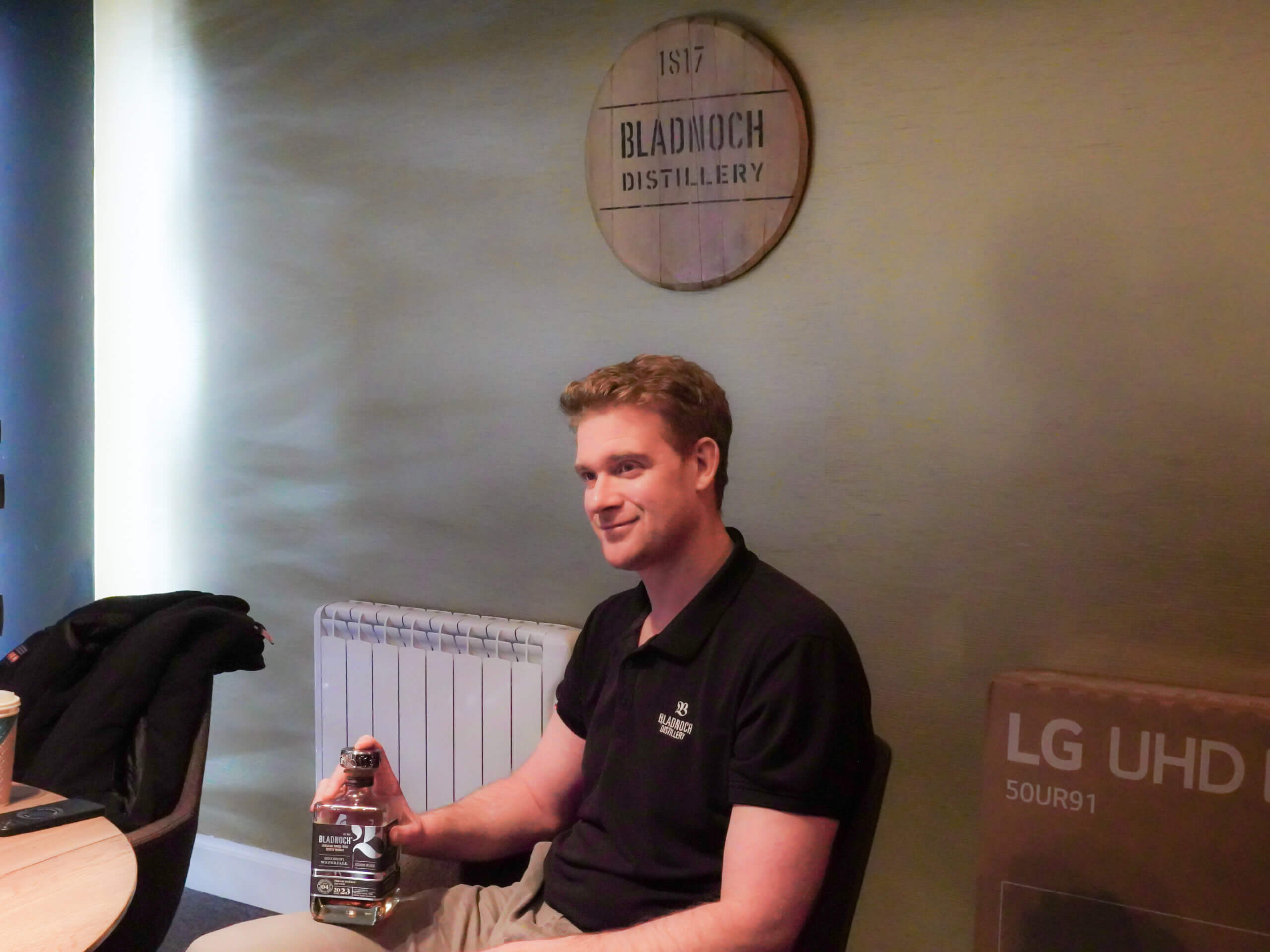
There’s a lot to expect from Bladnoch Distillery in 2024
Dear WHISKY:
What would be your next step?
Nick:
Do all that. As we talked about it at the beginning, my job is to think about the story, design, and how it hangs together, how to communicate and bring it alive in a completely different culture. Also, I’d like you to continue to operate with transparency and honesty about how we do it. Ultimately, I just want people to enjoy their whisky and enjoy the experience. And hopefully, come to Asia and Japan later in the year to see how Bladnoch is enjoyed there.
Bladnoch Distillery has a unique story and heritage, as Nick calls it the “brand-new 200-year-old distillery.” As a custodian of the distillery, Nick strives to maintain its classic Lowland-style whisky while also innovating to cater to a broader global fan base.
His respect for Bladnoch’s distinct character is reflected in his commitment to future-proofing the brand through careful warehouse management.
Nick comments that 2024 will be an exciting year for Bladnoch Distillery. Make sure to keep tabs on Bladnoch and Nick’s entertaining new releases!